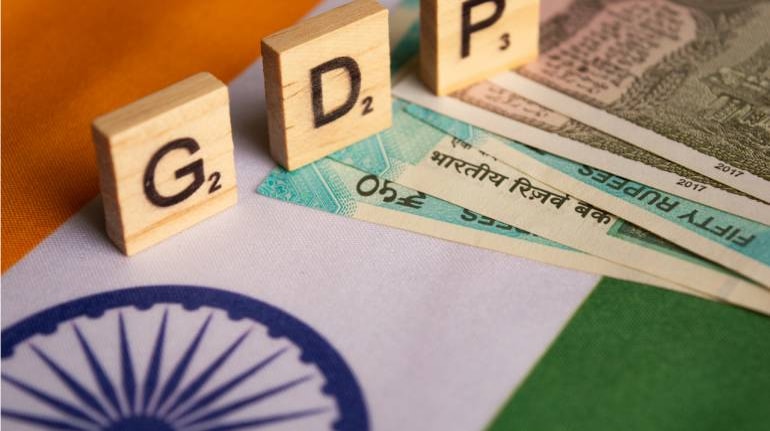



The Economic Survey for 2022-23 has pegged India's GDP growth for the next fiscal 2023-24 in a broad range of 6-6.8 percent. The Survey's baseline forecast for real GDP growth is 6.5 per cent. The Survey was tabled by Finance Minister Nirmala Sitharaman in Parliament today. It is the flagship document of the Ministry of Finance prepared under the stewardship of the Chief Economic Advisor. The document holds key insights into India's macroeconomic landscape and government policies and also reforms that can be ushered in.
This year's Survey is being presented at a time when India's economy is being hailed as a bright spot amid recessionary fears in advanced economies. The Survey comes just a day before Finance Minister Nirmala Sitharaman presents Budget 2023.
Ahead of the Budget Session of Parliament, Prime Minister Narendra Modi said Union Budget will attempt to meet the hopes and aspirations of common citizens. He said that the Budget will be a ray of hope for the world amid global economic turmoil.
Also read: Nirmala Sitharaman tables Economic Survey, FY24 GDP growth seen at 6-6.8%
Addressing the media ahead of the Budget Session of Parliament, Modi recognised the "credible voices from the world of economy". The prime minister said the Budget, to be presented by Finance Minister Nirmala Sitharaman on February 1, will strive to fulfil people's aspirations and also boost the hopes with which the world is looking at India.
Here are the key highlights from the Economic Survey for 2022-23:
*Challenge of the depreciating rupee, although better performing than most other currencies, persists with the likelihood of further increases in policy rates by the US Fed
*If inflation declines in FY24 and if real cost of credit does not rise, then credit growth is likely to be brisk in FY24. RBI has projected headline inflation at 6.8 per cent in FY23, which is outside its target range. At the same time, it is not high enough to deter private consumption and also not so low as to weaken the inducement to invest.
*It is expected that reaching the budget estimate for the fiscal deficit during FY23 will not be a concern for the Union Government. Union Government will be on track with the fiscal path outlined by the Medium-Term Fiscal Policy Statement.
*The widening of the CAD may also continue as global commodity prices
remain elevated and the growth momentum of the Indian economy remains strong. The loss of export stimulus is further possible as the slowing world growth and trade shrinks the global market size in the second half of the current year.
*Sustained increase in private Capex is imminent with the strengthening of the balance sheets of the Corporates and the consequent increase in credit financing it has been able to generate.
*Financial health of the PSU banks has seen an improvement. This has positioned them for better credit supply. Consequently, the credit growth to the Micro, Small, and Medium Enterprises (MSME) sector has been remarkably high, over 30.6 per cent, on average during Jan-Nov 2022, supported by the extended Emergency Credit Linked Guarantee Scheme (ECLGS) of the Union government.
*Centre's Capital expenditure for Road Transport and Highways in Apr-Nov FY23 stood at Rs 1.49 lakh crore rise of 102% YoY. Centre's Capital expenditure for Railways in Apr-Nov FY23 stood at Rs 1.15 lakh crore, a rise of 76.65% YoY.
*Cumulative FDI in the pharma sector crossed the $20 billion mark in September 2022. Further, FDI inflows have increased four-fold over five years until September 2022, to $699 million. Growth in pharmaceutical output has slowed due to an unfavourable base effect and the waning of the pandemic.
*Government, along with private sector, has progressively worked towards increasing the share of renewables. This will ensure a gradual but calibrated energy transition, meeting the country’s sustainability targets and giving primacy to its national developmental requirements.
*The scenario of subdued global growth presents two silver linings – oil prices will stay low, and India’s CAD will be better than currently projected. The overall external situation will remain manageable.
*The country is now a global force in steel production and the 2nd largest crude steel producer in the world. The steel sector’s performance in the current fiscal year has been robust, with cumulative production and consumption of finished steel at 88 MT and 86 MT, respectively.
*The performance of the agriculture and allied sector has been buoyant over the past several years, much of which is on account of the measures taken by the government to augment crop and livestock productivity, ensure certainty of returns to the farmers through price support, promote crop diversification, improve market infrastructure through the impetus provided for the setting up of farmer-producer organisations and promotion of investment in infrastructure facilities through the Agriculture Infrastructure Fund.
Discover the latest Business News, Sensex, and Nifty updates. Obtain Personal Finance insights, tax queries, and expert opinions on Moneycontrol or download the Moneycontrol App to stay updated!
Find the best of Al News in one place, specially curated for you every weekend.
Stay on top of the latest tech trends and biggest startup news.